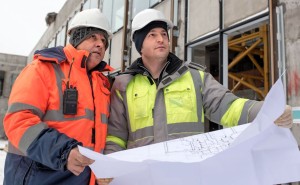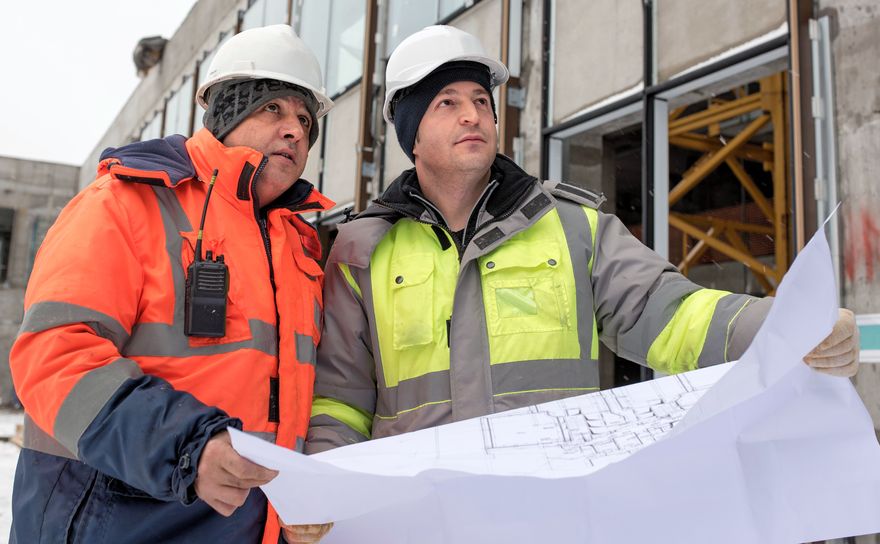The importance of safety culture in civil engineering and construction industries
 Safety culture is a critical aspect of any industry, but it is essential in the civil engineering and construction fields. A safety culture is an organizational culture that prioritizes safety as a core value and integrates safety into all aspects of operations. In our industry, this safety culture and the safety of workers and the public are paramount, and any safety lapses can have serious consequences. This blog post will explore the importance of safety culture in civil engineering and construction industries and highlight some best practices for developing and maintaining a strong safety culture.
Safety culture is a critical aspect of any industry, but it is essential in the civil engineering and construction fields. A safety culture is an organizational culture that prioritizes safety as a core value and integrates safety into all aspects of operations. In our industry, this safety culture and the safety of workers and the public are paramount, and any safety lapses can have serious consequences. This blog post will explore the importance of safety culture in civil engineering and construction industries and highlight some best practices for developing and maintaining a strong safety culture.
The Importance of Safety Culture
The civil engineering and construction industries are inherently risky, with workers often exposed to hazardous conditions and high-risk activities. In these industries, safety culture is critical to protecting workers and the public. A strong safety culture can help to prevent accidents and injuries, reduce costs associated with accidents and injuries and improve worker morale and productivity. A safety culture also demonstrates a company’s commitment to the well-being of its workers and the public, which can help attract and retain employees and enhance its reputation.
Developing a Strong Safety Culture
Developing a strong safety culture is an ongoing process that requires commitment and effort from all levels of an organization. Here are some best practices for developing and maintaining a strong safety culture in the civil engineering and construction industries:
- Leadership Commitment. Leadership commitment is critical to developing a strong safety culture. Leaders should set the tone for the organization and prioritize safety as a core value. This involves providing resources, training and support for safety initiatives and actively participating in safety programs and activities.
- Communication. Effective communication is essential to building a strong safety culture. This includes providing clear and concise instructions to workers, promoting open communication and feedback and ensuring that workers know safety policies and procedures.
- Training and Education. Training and education are essential components of a strong safety culture. Workers should be provided with regular safety training and education, including hazard identification, risk assessment and safe work practices. Ongoing training and education can help to reinforce safety culture and improve safety performance.
- Hazard Identification and Risk Assessment. Hazard identification and risk assessment are critical components of safety culture. Workers should be encouraged to identify hazards and report potential safety risks. Risk assessments should also be conducted regularly to identify and mitigate safety risks.
- Empowering Workers. Empowering workers is an important component of safety culture. Workers should be encouraged to take an active role in safety programs and initiatives and provided with the necessary resources and support. This can include safety committees, safety ambassadors and safety incentive programs.
- Continuous Improvement. Continuous improvement is a key component of safety culture. Regular evaluations and audits should be conducted to identify areas for improvement and corrective actions should be taken to address safety deficiencies. Safety culture should be viewed as an ongoing process, with the goal of continuous improvement and excellence in safety performance.
Benefits of a Strong Safety Culture A strong safety culture can provide numerous benefits to civil engineering and construction organizations. These benefits include: Reduced Accidents and Injuries: A strong safety culture can help to reduce accidents and injuries by promoting safe work practices and providing workers with the necessary resources and support to work safely.
Improved Morale and Productivity: An improved safety culture can also improve worker morale and productivity by promoting a safe and healthy work environment. Workers are more likely to feel valued and respected in a safety-conscious organization, which can enhance their motivation and productivity.
Reduced Costs: A safety culture can also help reduce costs associated with accidents and injuries, including workers’ compensation claims, medical expenses and lost productivity. Investing in a safety culture can result in significant cost savings over time.
Enhanced Reputation: A strong safety culture can enhance an organization’s reputation as a responsible and ethical business. This can help attract and retain employees, customers and stakeholders and improve the organization’s overall brand image.
Compliance with Regulations and Standards: A strong safety culture can help organizations comply with regulations and standards related to workplace safety. This can help to avoid legal and financial penalties and demonstrate a commitment to regulatory compliance.
In conclusion, safety culture is critical to the success of civil engineering and construction industries. A strong safety culture can help to prevent accidents and injuries, improve worker morale and productivity, reduce costs and more. Developing and maintaining a strong safety culture requires leadership commitment, but effective communication, training, and education must also be present. By prioritizing safety culture as a core value, civil engineering and construction industry organizations can create a safe and healthy work environment for their workers and the public. We hope this has helped you understand why safety culture is so important to us at McNeil Engineering and in the civil engineering and construction industry. If you could benefit from our civil engineering team, Visit us here and contact a team member today. We’d be happy to discuss an upcoming project for any of our services.

